Domestic violence is a heartbreakingly widespread problem, affecting people of every demographic, in every country, and throughout time. It can cause physical and emotional pain, affect people’s entire lives, create lasting psychological trauma, and prompt intergenerational issues.
To tackle domestic violence and its consequences, it’s important to promote and sustain awareness. This is why National Domestic Violence Awareness Month exists! Here’s more about our domestic violence awareness month and what it teaches us to look for in our relationships and in the lives of those around us.
When Is Domestic Violence Awareness Month?
October is Domestic Violence Awareness Month. Since its inception in 1989, National Domestic Violence Awareness Month has been a time to promote domestic violence awareness, be a voice for domestic violence (DV) victims, and spread knowledge of what DV looks like and how it affects people.
In October 2022, the theme for National Domestic Violence Awareness Month will be #Every1KnowsSome1. This year’s theme “strives to highlight how common domestic violence is and that it is more than physical violence.” You can support domestic violence awareness by advocating for victims of DV, sharing DV information and resources on social media, donating to organizations that provide DV services, and more.
Since this year’s theme highlights how DV encompasses more than just physical violence, it’s a great time to educate yourself and others about what DV really looks like. It can include varying and multiple types of abuse such as sexual, emotional, and financial abuse. One of the best ways to understand DV is to examine the differences between a healthy relationship and an abusive one.
Here’s a breakdown of healthy relationships versus abusive relationships, so you can better recognize and understand DV.
What Is a Healthy Relationship?
Relationships are extremely complex in all cases and look different for everyone. However, there are some key qualities that distinguish a safe and healthy relationship. Signs of a healthy relationship include:
-
Trust
-
Openness and honesty
-
Mutual respect
-
Affection
-
Good communication
-
Give-and-take (reciprocity)
You can also ask yourself these questions to evaluate the health of your relationships:
-
Do you have trust in one another?
-
Do you respect each other?
-
Do you support each other’s interests and efforts?
-
Are you honest and open with each other?
-
Are you able to maintain your individual identity?
-
Do you talk about your feelings, hopes, fears, and dreams?
-
Do you feel and express fondness and affection?
-
Is there equality and fairness in your relationship?
Relationships that exhibit mutual respect and reciprocity indicate equality between partners. This equality and allowance for individuality is something that is often removed from abusive relationships, where the abuser will exert power over their partner and seek to diminish their partner’s capabilities and resources.
Characteristics of an Abusive Relationship
On the other end of the spectrum from healthy relationships are abusive relationships. These kinds of relationships are not merely unhealthy, but delve into the realm of DV and are actively harmful. However, as mentioned above, this harm is not limited to physical harm alone. Abuse can occur verbally, through financial actions or technological surveillance, or in many other forms.
While abuse can look different in each case, common signs of an abusive relationship include:
-
Hurtful or threatening communication
-
Mistreatment
-
Untrue accusations of cheating
-
Denial of abusive actions
-
Controlling behavior
-
Isolating behavior
Abuse may also often occur in a three-step cycle involving an escalation of tension, a major outburst or violent event, and in some cases, a period of remorse. That remorseful period can encourage people to remain in unsafe relationships by giving them false hope that circumstances will improve. Being able to identify and understand this pattern can help people recognize abusive relationships that they or their loved ones may be in.
At Crisis House, we are here during these stressful times to support families with our services and resources. We provide crisis intervention, transitional and permanent housing, and services for families and children fleeing domestic violence. We’re leaders in critical services in East County, San Diego, administering programs for individuals and families experiencing domestic violence and homelessness.
See our impact and help us reach those in need by donating or volunteering today! You can also sign up for our newsletter to stay in the loop as we work to connect families, children, and individuals to crucial resources. Together, we can stop the cycle of domestic violence, child abuse, and homelessness and empower people to renew their lives!







